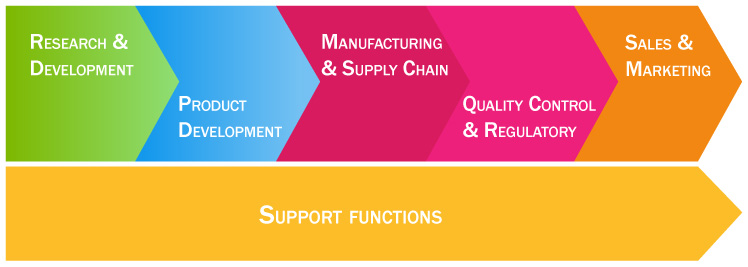The Value Chain
The Value Chain Map: Activities and Phases
A Value Chain is a set of activities that a company performs in order to deliver its product or service for the market. The concept was introduced by Michael Porter in his 1985 best-seller, Competitive Advantage: Creating and Sustaining Superior Performance. The Value Chain has two main components:
- The Product Stream Value Chain includes those activities directly involved in the creation of the company’s product or service. It has five main elements: Inbound logistics, Operations, Outbound logistics, Marketing and sales, and Service.
- The Support Value Chain describes those activities that are enable the operation of the Product Stream. It has four main elements: Firm infrastructure (accounting and legal), Procurement, Research and development, and Human resources.
Because it is industry-specific, the activities that make up a given Value Chain will differ (especially in the Product Stream), depending on whether the company is creating a physical good or providing a service. In other words, a manufacturing Value Chain would look very different from an insurance company Value Chain, for example. In the case of technical companies, Inbound Logistics includes research and product development.
The following provides more detail on some of the activities that would take place in each of the segments of the Product Stream and Support Value Chains in a manufacturing operation.



